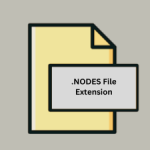.669 File Extension

UNIS Composer 669 Module
| Developer | Update Soon |
| Popularity | |
| Category | Audio Files |
| Format | .669 |
| Cross Platform | Update Soon |
What is an 669 file?
The .669 file extension is used for modules created by the UNIS Composer 669, a music tracker software. Trackers are a type of software used for creating music by arranging samples and patterns into a sequence.
The .669 format specifically supports a variety of features that cater to creating complex and dynamic chiptune compositions, primarily during the 1980s and early 1990s when tracker software was becoming popular.
More Information.
The UNIS Composer 669 emerged during a period when music trackers were revolutionizing music production for digital platforms. The format was part of a broader movement that included other tracker formats such as .MOD and .S3M.
The primary purpose of the .669 file format was to provide musicians with a means to compose and arrange music in a format that was easy to use and compatible with the capabilities of early personal computers and game consoles.
Trackers like UNIS Composer 669 allowed composers to arrange samples into patterns and sequences, enabling the creation of complex compositions with relatively limited hardware resources.
This was especially useful in the context of video game music and demo scene productions, where hardware limitations often restricted the complexity of audio.
Origin Of This File.
The UNIS Composer 669 was developed by UNIS (Universal New Interface Systems) in the early 1990s. It was designed to create and edit music modules that could be used in various digital audio applications.
The “.669” extension refers to the file format used by this specific tracker. The number “669” itself is somewhat arbitrary, often linked to versioning or other internal identifiers used by the software developers.
File Structure Technical Specification.
The .669 file format is characterized by its specific structure and technical details. Here’s a breakdown:
- Header Information: Contains metadata about the module, such as the number of patterns, the number of samples, and other configuration details.
- Pattern Data: The core of the module, where each pattern consists of sequences of note events, instrument changes, and effects.
- Sample Data: This section includes the actual audio samples used in the module. Samples are typically stored in a raw format and can be of varying lengths and qualities.
- Instrument Data: Information about the instruments used, including their properties and how they should be applied to the samples.
Technical Specifications:
- Sample Rate: The .669 format supports a range of sample rates, which may vary depending on the software version and hardware used.
- Bit Depth: Typically, the samples are stored in 8-bit or 16-bit depth, depending on the capabilities of the tracker and the samples themselves.
- Channel Support: The format supports multiple channels, allowing for polyphonic compositions.
How to Convert the File?
Converting .669 files to other formats can be necessary for modern use, such as incorporating the module into contemporary DAWs or audio software. Here’s how to convert these files:
- Using Tracker Software: Some tracker software that supports the .669 format also offers export functions to other formats like .WAV or .MP3. For example, you can use software like OpenMPT or Schism Tracker to open and then export .669 files to more widely supported audio formats.
- Online Converters: There are online services and conversion tools that can convert .669 files to more common formats. These tools may require uploading the .669 file to a website where it is then converted and available for download.
- Manual Conversion: Advanced users can manually extract the samples and patterns from a .669 file and reassemble them using a modern DAW. This method provides more control but requires a deeper understanding of both the .669 file format and the target format.
Advantages And Disadvantages.
Advantages:
- Efficient Use of Resources: The .669 format is designed to be resource-efficient, making it suitable for early computer systems with limited processing power.
- Pattern-Based Composition: The pattern-based structure allows for easy arrangement and modification of musical elements.
- Legacy Compatibility: The format is part of the early tracker music tradition, making it compatible with other tracker formats and software.
Disadvantages:
- Limited Audio Quality: Due to the constraints of early hardware and the 8-bit sample depth, audio quality may be limited compared to modern formats.
- Complexity of Use: While powerful, trackers can have a steep learning curve, which might be challenging for beginners.
- Obsolescence: With the advent of more advanced digital audio workstations (DAWs), the .669 format is less commonly used today, making it harder to find software that supports it.
How to Open 669?
Open In Windows
- OpenMPT: A free and open-source tracker software that supports .669 files.
- Schism Tracker: Another tracker software that can open and edit .669 files.
Open In Linux
- OpenMPT: Available through Wine or as a native build for some distributions.
- Schism Tracker: Native support for Linux is available, and installation can be done through package managers or source compilation.
Open In MAC
- OpenMPT: While OpenMPT is primarily for Windows, it can be run on macOS using Wine or similar compatibility layers.
- Schism Tracker: Also available for macOS, though installation might require additional steps.













